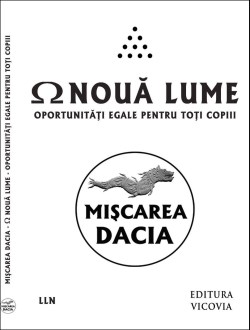Hyperian History Of The World (20th Century, Part 1)
Hyperian History Of The World (20th Century, Part 1)
As the 20th century dawned, science had become the dominant worldview for humanity. Religion was still very much active, of course, but had now become less overt. People went to church to ‘keep up appearances’, they read the bible to their children and continued to brainwash and psychologically damage them with threats of eternal hellfire should they disobey. Yet now, these same children were being taught a contradictory worldview at school.
If anything, this simply led to more confusion and more psychological damage. Whereas religion had once been a powerful force which infiltrated every aspect of life, it was now a mostly private affair. Science had now risen to prominence. Whereas the academic world had once been driven by theology and philosophy, now scientists were the main power. The theories of science were stated as eternal laws, just as the commandments of religion had been, yet now there were legions of scientific academics conducting experiments which served to ‘prove’ their theories, or at the very least, to provide evidence to support them.
The shift that had occurred was that people no longer accepted ideas on authority alone. A priest had nothing but the bible to back up what he said. A scientist had all manner of experiments and research papers to back up what he said. Yet, of course, this was far from perfect. Ordinary people were not reading these papers, nor were they assessing the results of experiments. They were still mostly just accepting what their scientific experts were telling them, having ‘faith’ that these experts were being honest.
Yet science was providing something to the world which religion never had – technology. The industrial revolution at the end of the 18th century had provided the world with all manner of machines which had led to the rise of extreme capitalism. Now, new inventions were shifting the focus away from production and on to consumption. At the start of the 20th century, the world had acquired telegraphic communication, motor vehicles, the phonograph etc. These physical objects, which could be bought and enjoyed by ordinary people, represented the triumph of science. Greedy capitalists had no problem with a society moving away from religion, as it was leading to a society of consumers eagerly waiting to purchase new technological products.
Yet, at the same time, science was undergoing two major revolutions, almost simultaneously, which would shake it to its very core and reveal all of the contradictions which lay at its base.
Maxwell’s electromagnetism had already presented ideas which did not fit into the Newtonian worldview. Maxwell’s equations, ‘proven’ to be correct after many experiments, could not be reduced to Newton’s simple equations of physics. This was troubling for physicists, as it suggested that Newton hadn’t told the whole story. Eventually, Hendrik Lorentz managed to unify Newton’s equations with Maxwell’s into a new set of equations known as the ‘Lorentz Transformations’. Whilst there was nothing wrong with the mathematics of these equations, their implications were shocking to scientists. According to the equations, when objects move through space, as their speed increases they begin to physically contract and time begins to slow down for them. After centuries of Newtonian physics, this seemed absurd.
Albert Einstein was the scientist who took these new ideas and developed an entirely new theory of physics, known as the theory of Relativity. According to relativity, the contraction of space and the dilation of time predicted by the Lorentz transformations were different depending on the frame of reference of the observer. A stationary observer would observe space contraction and time dilation in a moving object, yet, from that object’s point of view, it is the other observer that is moving, with space contraction and time dilation, whilst the object remains still and unchanged. Einstein abolished any ‘absolute’ reference frame and the only absolute in his theory was the speed of light, which remains the same in any frame of reference even if everything else changes.
Einstein’s theories unified time and space, with time becoming a fourth dimension of spacetime. Einstein then had to make sense of Gravity. He suggested that the mass of physical objects in spacetime cause spacetime to ‘warp’ around that mass. Objects with greater mass will cause a greater degree of spacetime ‘warping’ leading to smaller objects falling into that warp if they got too close, thereby explaining gravity. The ‘warping’ or ‘curvature’ of spacetime could be described using non-Euclidean geometry newly discovered by mathematician Bernhard Riemann. Luckily for Einstein, mathematicians seemed always to be one step ahead of physicists, discovering new mathematical ideas just in time for physicists to use them in their new theories. As ever, science was making great use of mathematics, yet philosophy was nowhere to be seen.
Einstein’s theory, which caused a revolution in physics and is still considered true today by most scientists, simply doesn’t hold up to rational scrutiny. Einstein asserted that the speed of light was the only constant, yet never offered any reason why this should be. Also, without there being an ‘absolute’ reference frame, Einstein’s theory gives rise to a worldview in which all manner of contradictory things are happening simultaneously, again with no reason given as to why this should be the case. Of course, scientists weren’t interested in rational scrutiny, and many physical experiments seemed to provide evidence to support Einstein’s theory, leading to a whole new area of science for papers to be written about and legions of scientists could now, by subscribing to the new theory, have successful academic careers, truth be damned.
Yet Einstein’s relativity was not the only major revolution in physics in the early 20th century. Whereas relativity focused mainly on very large objects in spacetime across the universe, other physicists were looking into very small objects. After the discovery of radioactivity at the end of the 19th century, Max Planck, as early as 1900, discovered that energy was emitted from atoms only in certain discrete amounts. In 1913, Niels Bohr showed that electrons in atoms were arranged in shells around the nucleus of the atom, with specific, discrete numbers of electrons in each shell.
All of these ideas eventually led to a new physics called Quantum Mechanics, aimed at explaining these phenomena. The major new idea was that matter, traditionally viewed as particles, could also be viewed as waves. The famous ‘double-slit’ experiment shows this, with particles fired through two slits producing a wave on the other side.
As ever, physicists simply developed their theories to match the observed results of experiments, rather than utilising rational principles to logically determine the truth. To explain this wave-particle duality, Max Born suggested that the wave associated with a particle was a wave of probability, a range of possible states that the particle could exist in. This ‘wave function’ contains all possible states that the particle can have and, extraordinarily, the assertion was made that the particle actually exists in all of these possible states simultaneously, until an observation is made, at which point one of these states is selected randomly and the wave function collapses into a single, physical, observable state.
This idea turned physics on its head. With Newton’s laws, everything in the universe could be said to be deterministic. If one knew all of the starting conditions, one could, using the laws of physics, predict exactly how everything would turn out. Now, however, with quantum mechanics, determinism was gone. Randomness and probability had been introduced and there was now no way of predicting which state a particle would assume when an observation was made.
As ever, rational scrutiny shows all of this to be absurd. How does the act of observation cause the wave function to collapse? What constitutes an ‘observation’? What constitutes an ‘observer’? Erwin Schroedinger developed a famous thought experiment to show these absurdities, in which a cat is sealed inside a box containing a radioactive substance. Whilst inside the box the cat, according to the new theory, is both alive and dead simultaneously. Only when the box is opened and an observation is made does the wave function collapse and the cat is revealed to be either alive or dead. Although Schroedinger developed this thought experiment to show the absurdity of quantum mechanics, it is now used by scientists to demonstrate the truth of this theory!
Once again, science suffered from a lack of philosophy. Unfortunately, either no one noticed, or no one cared and, again, scientists embraced a new area of physics which they could write endless papers about and further their careers.
One of the biggest critics of quantum mechanics was actually Einstein himself, mainly because it contradicted his own relativity theory. To this day the theories are both accepted as true by the scientific establishment, despite totally contradicting each other. Science ought to have been revealed as being just as absurd and irrational as religion had been, yet instead, the scientific worldview became even more dominant, scientists became some of the most respected people in society and Einstein even became a celebrity, adored by the masses. Few noticed, or cared, that these theories could not possibly be true. Science continued on, relentlessly attempting to unify these new theories, a task which is still not complete. Yet, so long as research papers could be written and Nobel prizes won, no scientist really cared.
The power of religion may have greatly diminished, but the power of science was attaining to newer, greater heights, yet was just as, if not more, damaging than religion had ever been.
Brice Merci – hyperian












